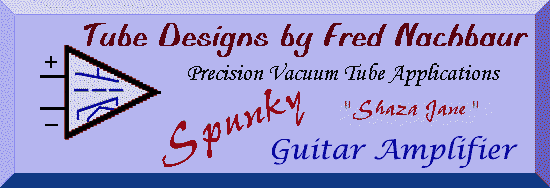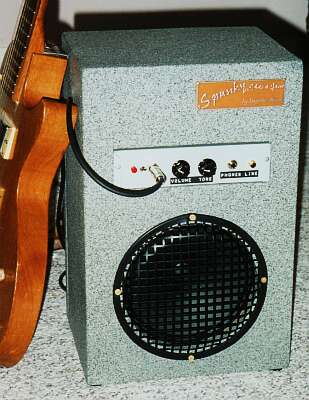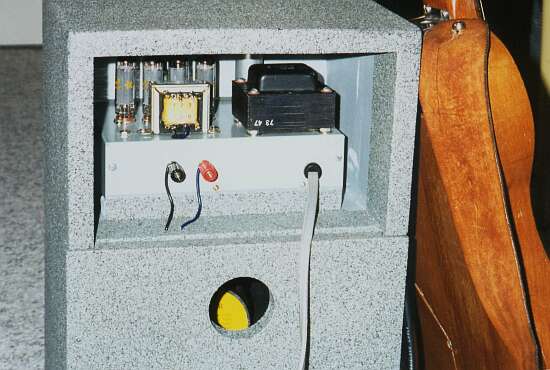 |
|
My interest and fascination with inexpensive "radio" valves using series- connected line- operated heaters didn't stop with the completion of "Li'l 4x4". At the same time, my lovely wife was a bit envious of that little rock-speckled box that sits in our room. So what better project than to build her very own tube guitar amplifier? |

"SPUNKY" Shaza Jane by Fred Nachbaur, Dogstar Music ©2001 |
| The resulting project sports up to about 8 watts of output power, which when connected to an efficient speaker is plenty of power for small rooms. For larger rooms, the unit is easily mic'd into the house PA system. |



